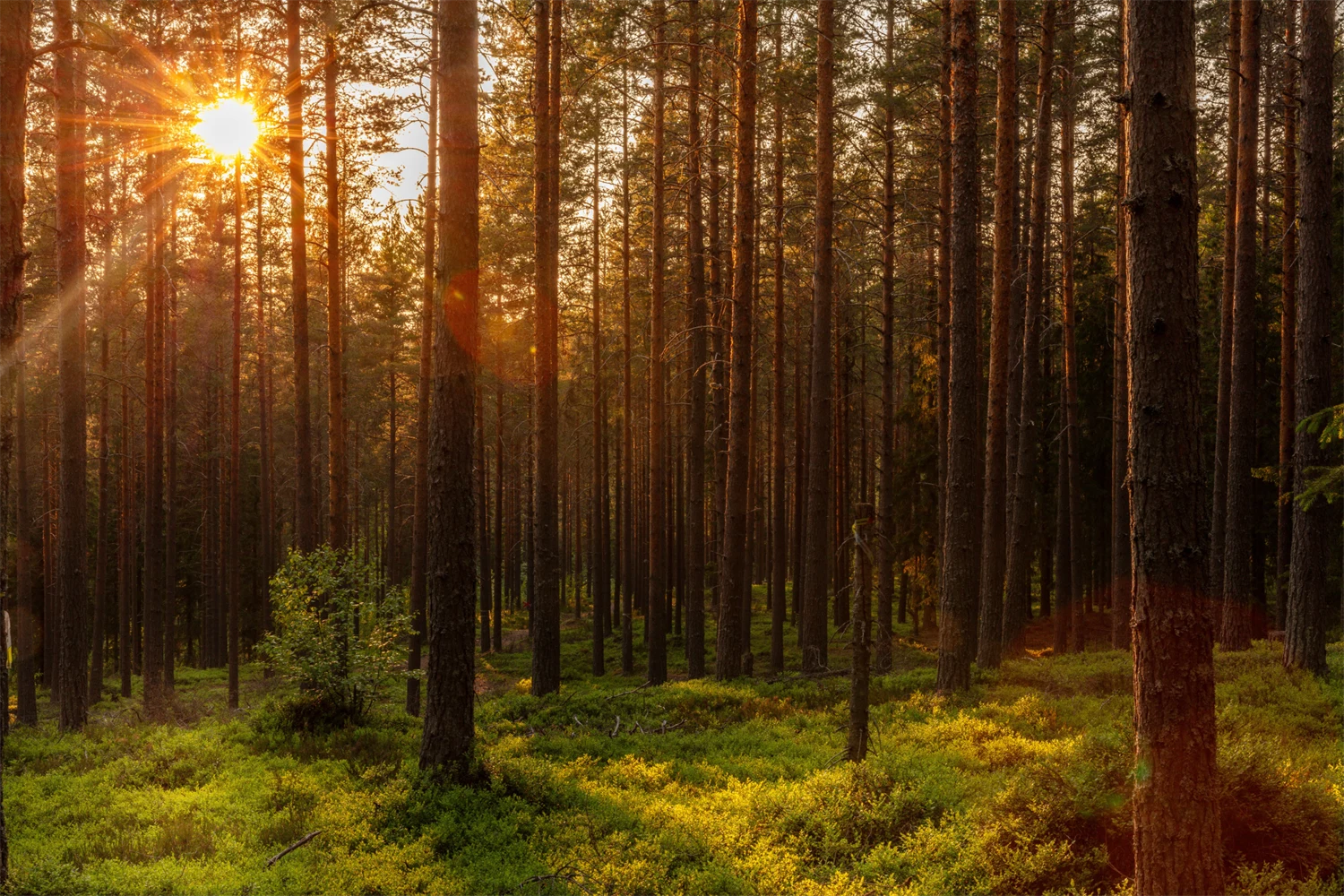The focus is on accelerating the green transition while promoting sustainable ecological, economic, and social development.
"The forest industry is already making a significant contribution to the green transition, not least in terms of the climate benefits we create by replacing fossil materials with renewable ones, both in Sweden and internationally. With the Future Agenda, we are raising the level of ambition even further, and it feels fantastic, especially since the entire industry has signed on with a target for 2040," says Stina Sandell, SVP, Sustainability and Communications at Holmen.
The work to formulate the agenda has been ongoing since last year, and the launch continues well into the fall through seminars, report releases, and more. The three defined commitments are related to climate, circularity, and biodiversity:
1. By 2040, the climate benefit of the forest industry should increase by 30 percent
The forest industry already contributes significantly to climate benefits - 93 million tons of CO2e per year in 2020. However, they aim to do even better. Through forestry and the replacement of fossil products with renewable ones, they intend to increase climate benefits by an additional 30 percent - reaching 122 CO2e per year by 2040.
To achieve this goal, the industry will increase carbon sequestration - the amount of carbon stored by trees in the forest - by increasing the growth rate of forests. Through increased growth rates and optimized processes, more raw materials will become durable sawn timber, as well as products such as paper and packaging, which also replace fossil alternatives. Furthermore, they aim to reduce the industry's fossil emissions - currently four million tons of carbon dioxide per year - to zero emissions.
2. By 2040, the forest industry's products should be completely fossil-free and recyclable
Renewable wood fiber is well-suited for recycling multiple times. The circular wheel should turn several times - partly by making wood fiber reusable more often and partly by increasing the recycling rate for certain products.
There are several steps toward achieving this goal. One is entirely fossil-free products, where the raw material and a significant portion of the production are fossil-free, but there is work to be done in other processes, such as transportation.
Furthermore, the products should be completely recyclable by 2030. Currently, about 80-85 percent of paper and cardboard are recycled in Sweden and the EU. The same approach needs to be applied to planks and boards, which should be reused more extensively within the construction industry when buildings are demolished or renovated. Their wood products should be entirely reusable by 2030.
3. By 2040, Sweden should have thriving forests with richer biodiversity
Biodiversity is a prerequisite for thriving and resilient forests that are well-prepared for climate change and more extreme weather conditions. Forests should be managed in a way that increases both growth and biodiversity.
The steps toward goal fulfillment are several:
Forest management practices need to be diversified. Nature-adapted clear-cutting and other management models need to be developed. They want to promote the inclusion of deciduous trees, set aside larger contiguous forest areas, and ensure climate adaptation in all contexts.
Through increased nature-conserving management in collaboration with authorities, landowners, and nonprofit organizations, they aim to preserve threatened species, both in protected areas and in production forests.
They want to develop measurement methods that show how biodiversity in the managed forest landscape is developing through conservation and consideration work. They need more knowledge about how different species respond to this work.
On the same theme, they are taking an initiative to encourage more research, including how different forms of forestry affect biodiversity or how they can sustainably increase forest growth.
The above is an excerpt from the Future Agenda (Framtidsagendan). For those who want to access it in its entirety, please visit Skogsindustrierna's website here.


